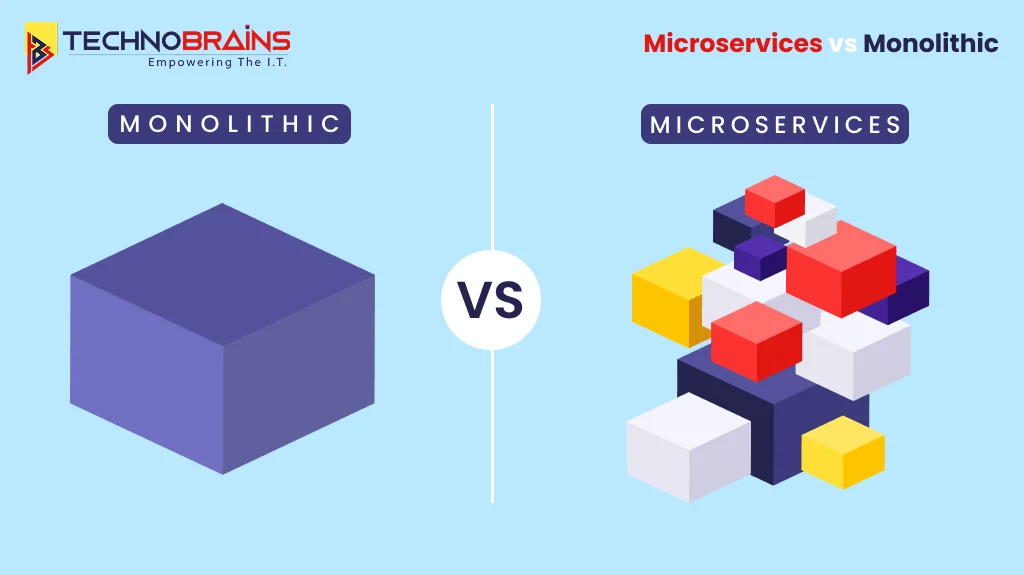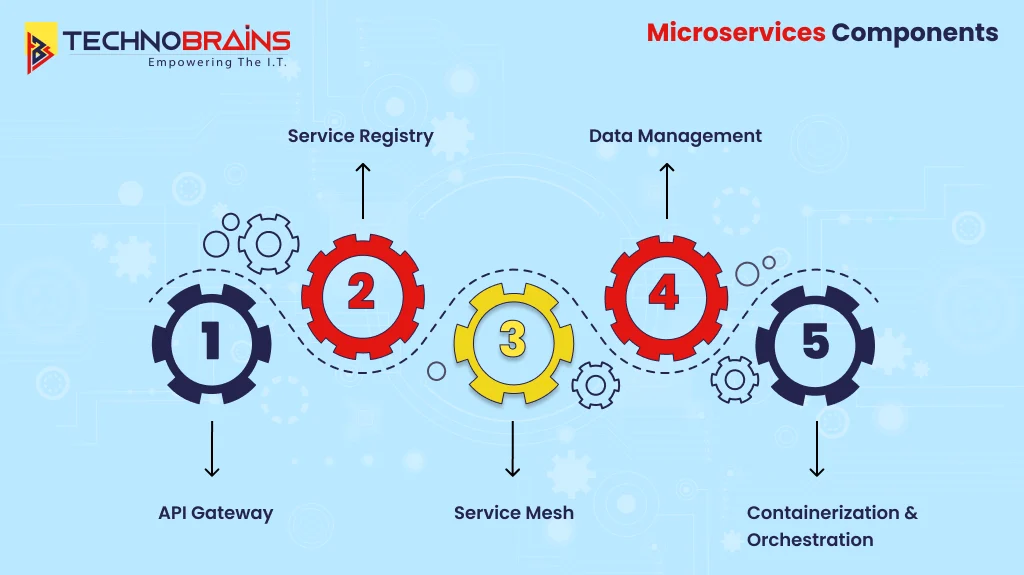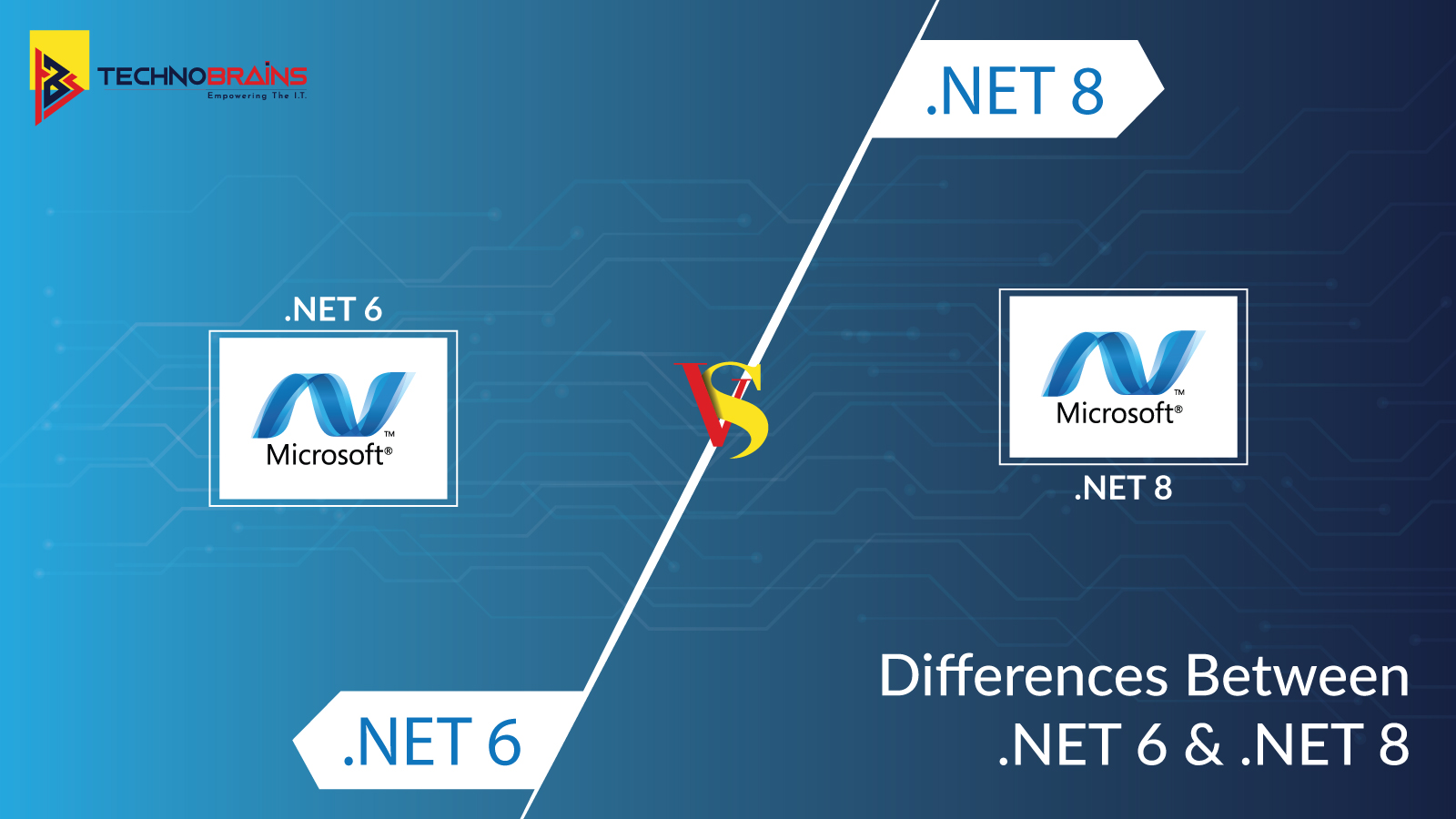Get 40 Hours Free Developer Trial
Test Our Developers for 40 Hours at No Cost - Start Your Free Trial →
Did you know 85% of businesses now use microservices architecture in their software systems? This trend reflects the evolution of modern development to meet the demands for scalability and flexibility in today’s rapidly changing business environment.
Microservices are lightweight and self-independent components of an application. Each piece handles specific tasks and communicates with the others via APIs. Unlike traditional monolithic designs, which contain all features within a single executable application, microservices offer several benefits. They bring independence, isolation, flexibility to scale, and the ability to reuse components. Additionally, Microservices enable the independent deployment of services, allowing developers to update specific parts of the system without disrupting the rest.
In this guide, we’ll explain what microservices architecture is, how it works, and why it’s so essential in today’s software development. It includes real-world examples, a comparison to monolithic systems, and key design patterns that support scalability. Whether you’re new to the concept or looking to expand your existing knowledge, this article offers valuable insights into how microservices might change the way you develop software.
What is Microservices Architecture, and How Does it Work?
Microservices architecture changes how applications are created, managed, and delivered. Instead of using one large connected system, this approach splits software into smaller, standalone parts that work together seamlessly.
Definition of Microservices
Microservices architecture uses a design method that organizes applications into small, independent services. Each service is responsible for a specific task or function. These services are self-contained and can be developed, deployed, and maintained independently of one another.
The key characteristics of microservices include:
- Self-contained: Every microservice includes its logic and data tied to a specific task
- Independent: Teams can update services without rebuilding the whole application
- API communication: Services communicate using clear APIs like REST or gRPC
- Unique data control: Each service manages its data instead of depending on one shared database
- Tech flexibility: Services can rely on various programming languages or tools depending on their needs
Microservices vs. Monolithic Architecture
Microservices and Monolithic architecture show apparent differences. In a monolithic application, all components are tightly connected within a single codebase. Even minor changes require developers to rebuild and test the entire system.

On the other hand, microservices rely on separate components that work on their own. Developers can deploy individual services rather than the entire application. This fundamental difference affects everything from development speed to system resilience.
Scalability is also a major difference. Monolithic systems face challenges with horizontal scaling due to their interconnected structure. Scaling a monolithic app requires upgrading both memory and processing power for the whole application, which can cost a lot more. However, Microservices let companies scale specific parts based on what they need, making better use of resources.
Quick comparison: Monolithic vs Microservices architecture
| Aspect | Monolithic Architecture | Microservices Architecture |
|---|---|---|
| Architecture | Single codebase | Multiple independent services |
| Deployment | One unit | Individually deployable services |
| Scalability | Entire app | Specific services |
| Technology Stack | Usually uniform | Mixed-per service |
| Failure Impact | Entire app affected | Isolated to the failed service |
| Development Speed | Faster initially | Faster in long-term |
| Data Storage | Uses a single database | Each service have its own database |
| Maintenance | Harder as app grows | Easier via modularization |
| Testing | Simpler | More complex |
Read Also, Best Technologies for Building Microservices Apps.
Key Components of Microservices Architecture

Various important parts come together to make microservices architecture work well:
API Gateway: It acts as the main entry for client requests, directing them to the right services. It also handles tasks like authentication and load balancing, which simplifies how clients communicate with microservices.
Service Registry: Service Registry keeps a current list of all services and their locations. It helps services locate and communicate with each other because services often start, stop, or move to different servers.
Service Mesh: It handles communication between services and provides features like load balancing, encryption, and tracking activity across networks. Tools such as Istio or Linkerd build a solid structure to make service-to-service communication smoother and more efficient.
Data Management: Microservices use the “database-per-service” pattern instead of centralized databases. Each service controls its own separate data storage. This design boosts independence but makes it harder to keep data consistent.
Containerization and Orchestration: Microservices work well with containerization tools like Docker. These tools bundle each service with its dependencies. Orchestration systems like Kubernetes then manage these containers. They handle deployment, scaling, and everyday operations in distributed setups.
Benefits of Microservices Architecture
Microservices offer many advantages to development teams. They allow companies to build stronger, more flexible applications that can respond quickly to changing business needs.
Faster development and deployment
Modern software development needs fast updates and frequent deliveries. A microservices architecture makes this easier by letting teams handle separate parts of an application at the same time. Teams do not have to wait for others to finish, which boosts overall progress and fosters innovation. As a result, organizations speed up the delivery of new features and updates. Many businesses pair microservices with specialized Dot Net Core development to build robust, scalable applications more efficiently.
Better scalability and flexibility
One of the biggest benefits of microservices is their scalability. Compared to monolithic systems that need the entire application to be cloned for scaling, microservices let teams increase capacity for the parts that are in higher demand.
Additionally, microservices also allow teams to introduce flexibility by using different technologies. Developers can choose the best programming languages, tools, or frameworks to suit each service. This flexibility sparks innovation and helps software stay up-to-date with new technologies.
Independent service updates
By using microservices, developers can update or replace services without messing up the whole system. Each service works autonomously, so teams can fix, update, or even rebuild parts without stopping the entire application. This setup cuts down the risks tied to testing new ideas.
Better fault isolation
Microservices architecture keeps problems contained. If one service fails, it won’t cause the system to break down. Each service runs, so failures stay isolated instead of taking down the whole application. Tools like circuit breakers notice when a service is having trouble. This helps the struggling service recover and keeps the system working.
Real-Life Examples Where Microservices Work
Big tech companies have shown the power of microservices architecture through successful real-world implementations.
Amazon’s eCommerce
Amazon was one of the early adopters of microservices when it moved from a monolithic system to a distributed architecture. They used the “two-pizza team” rule, keeping teams small enough to be fed with just two pizzas. This way of structuring teams reflects their technical setup, where every service has its own clear owner and specific role.
Amazon Web Services (AWS) shows how microservices architecture works in real world. AWS cloud application provides many separate services like storage on S3, computing on EC2, and databases through RDS. Customers use these services, which allow flexibility and growth. Amazon broke down its big single application into smaller, standalone services. This change solved problems with scaling, making it easier to handle more and more users. Click here in order to learn more about our AWS development services.
Netflix
In the early 2000s, when Netflix‘s monolithic architecture struggled to grow with its increasing user base, it transitioned to microservices. Microservices helped Netflix boost both innovation and scalability as more people joined the platform. Netflix now depends on over 500 microservices and APIs to run its streaming service.
Uber’s ride-sharing
In 2014, Uber switched to a microservices architecture after struggling to scale its monolithic system to keep up with growing demand. Its dispatch system is a key microservice. It handles ride requests, assigns drivers, and ensures real-time updates. By splitting the system into microservices, Uber improved accuracy for locations and faster response times.
Microservices Design Patterns to Scale Systems
Scalable microservices require specific design patterns that solve challenges in distributed architecture. These patterns focus on addressing issues such as locating services, resolving faults, and maintaining data consistency across multiple services.

API Gateway Pattern
The API Gateway pattern offers one access point to manage all client requests in a microservices environment. It works as a reverse proxy that directs requests to the correct services and manages shared tasks like authentication and load balancing. This design hides the internal structure of services from clients, making client-side coding more straightforward. This can be helpful to simplify things for mobile apps.
Service Registry Pattern
The Service Registry pattern uses a database to track services, their instances, and where they are hosted. This central registry makes dynamic service discovery possible, which matters a lot since services often move to new servers, stop running, or restart. When services start, they add themselves to the registry. When they shut down, they remove themselves. This setup allows the registry to maintain itself.
Clients use this directory to find active service instances without needing fixed configurations. This approach helps systems handle changes more. Most service registries also include checks to confirm services are working before sharing their details with clients.
Circuit Breaker Pattern
The Circuit Breaker pattern helps stop failures from spreading in distributed systems. It works like an electrical circuit breaker by keeping track of recent errors and “tripping” when those errors pass a certain limit. This design uses three different states: Closed, where everything runs as usual, Open, where it signals a failure, and Half-Open, where it tests limited requests to check recovery progress.
Saga Pattern
The Saga pattern keeps data consistent between microservices without relying on distributed transactions. It organizes a set of local transactions where each service completes its task and passes on the process through events or messages. If something goes wrong at any step, compensating transactions undo what has already been done.
Event Sourcing Pattern
Event Sourcing keeps track of events that change the state in a store, where data is added instead of storing just the current state. This method provides an unchangeable record that holds the complete history of all actions on objects. Systems use these events to rebuild the state at any point in time, which helps in valuable insights for debugging and analytics. Event Sourcing is paired with Command Query Responsibility Segregation (CQRS) to boost performance and handle large-scale systems.
If you are considering ASP.NET for building apps in this architecture, you might like to read, ASP.NET Core Benefits for Microservices Development.
Challenges and Considerations When Using Microservices
Using Microservices creates big challenges that developers need to manage. Switching from a monolithic system to multiple distributed systems adds a lot of extra complexity, so it requires careful planning and specialized approaches.
Data consistency and distributed transactions
One of the hardest parts of working with microservices is keeping data consistent between them. Every microservice has its database, which makes traditional ACID transactions harder or impossible to implement efficiently in distributed services. When services need to update more than one database, the dual write problem occurs and makes things tricky.
To solve these problems, organizations use eventual consistency models. These models allow short-term data mismatches as long as the system aligns all data to the same state.
Monitoring and troubleshooting
Microservices are distributed systems, which makes troubleshooting and monitoring harder compared to monolithic systems. Logs are distributed across multiple services and run on temporary instances, which makes it tough to identify problems.
To observe and analyze these systems, three main types of data are key:
- Distributed tracing helps follow requests as they move through different services
- Centralized logging gathers logs from every service instance
- Application metrics measure performance and track system health
These tools help development teams to understand applications’ behavior, pinpoint slowdowns, and fix problems fast.
Security and access control
Using a microservices architecture increases the risks by creating many possible weak points for attacks. To ensure these distributed parts stay secure, companies need to take layered measures that include several strategies.
Handling authentication and authorization gets tricky since every microservice might need something different. A lot of groups handle authorization both through an API gateway and with more detail at the service level.
Managing secrets like API keys, authentication credentials, and client secrets is another tough issue. These kinds of sensitive details should not be kept in source code repositories.
Team communication and coordination
Microservices are built by different teams focusing on specific services, so good communication between them becomes very important. Moving to microservices often means reshaping teams to focus on business functions instead of technical structures. This method, called “vertical slicing,” helps organize teams better.
Clear API contracts and service agreements set expectations between provider and consumer teams. This reduces the need for constant reliance on each other. Clear repository boundaries also provide access control and make independent deployments possible.
Conclusion
Microservices architecture has reshaped how modern software gets developed. This article explained how breaking applications into smaller, standalone services brings more benefits than using old monolithic methods. Companies can now create apps faster, scale better, and adapt more when they choose this approach. With the right software development partner, companies can streamline processes, build high-performing applications faster, and adapt quickly to evolving market demands.
The future of creating software focuses on distributed and scalable systems. Microservices might not fit every project, but they provide strong benefits to handle scaling needs, adapt fast, and stay reliable through different situations. Teams that understand microservices architecture set themselves up to design systems that adapt and grow with shifting business needs. This leads to better user experiences and keeps technical flexibility intact.
Ready to modernize your software with microservices?
Our expert developers can help you break down monoliths and build scalable, future-ready applications.
Contact us today for a free consultation!







